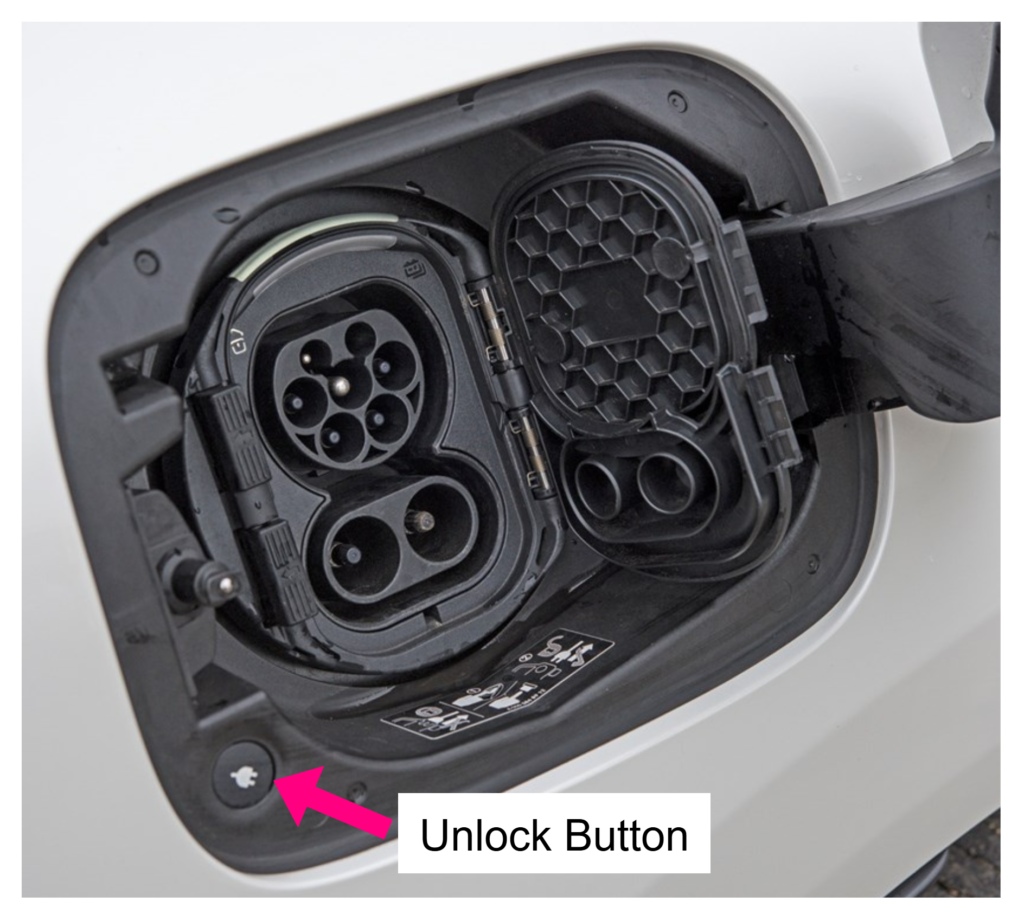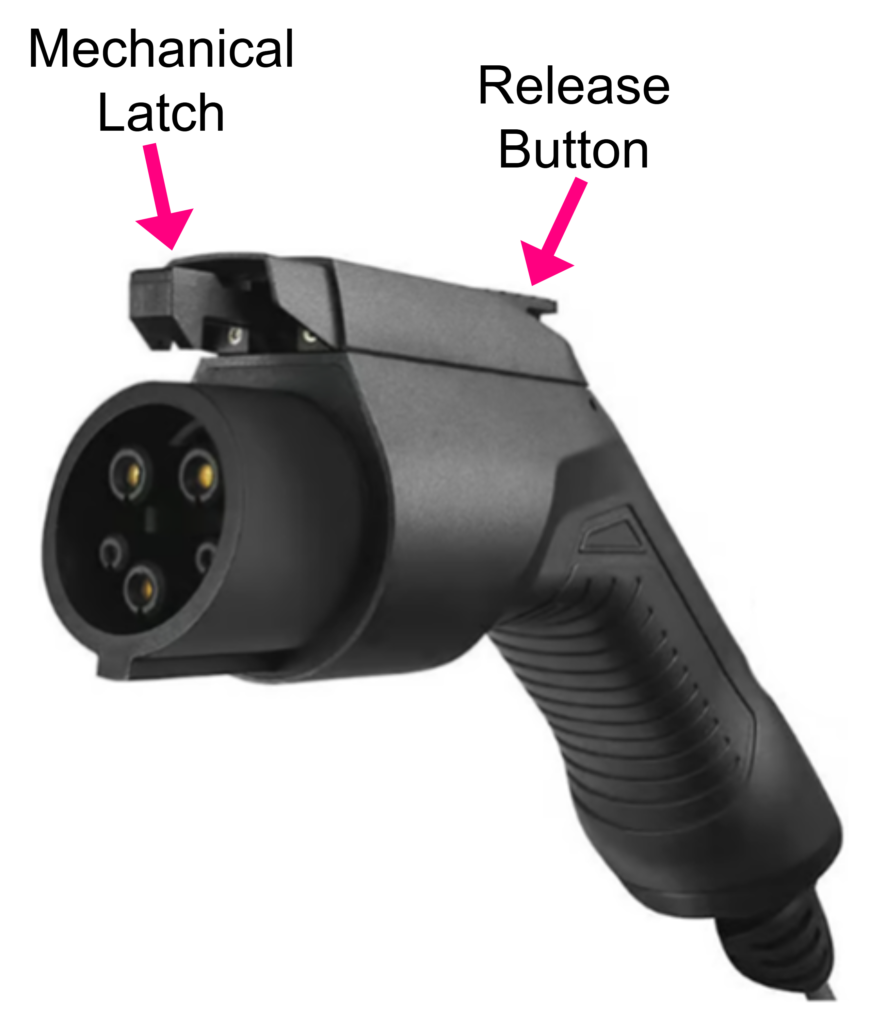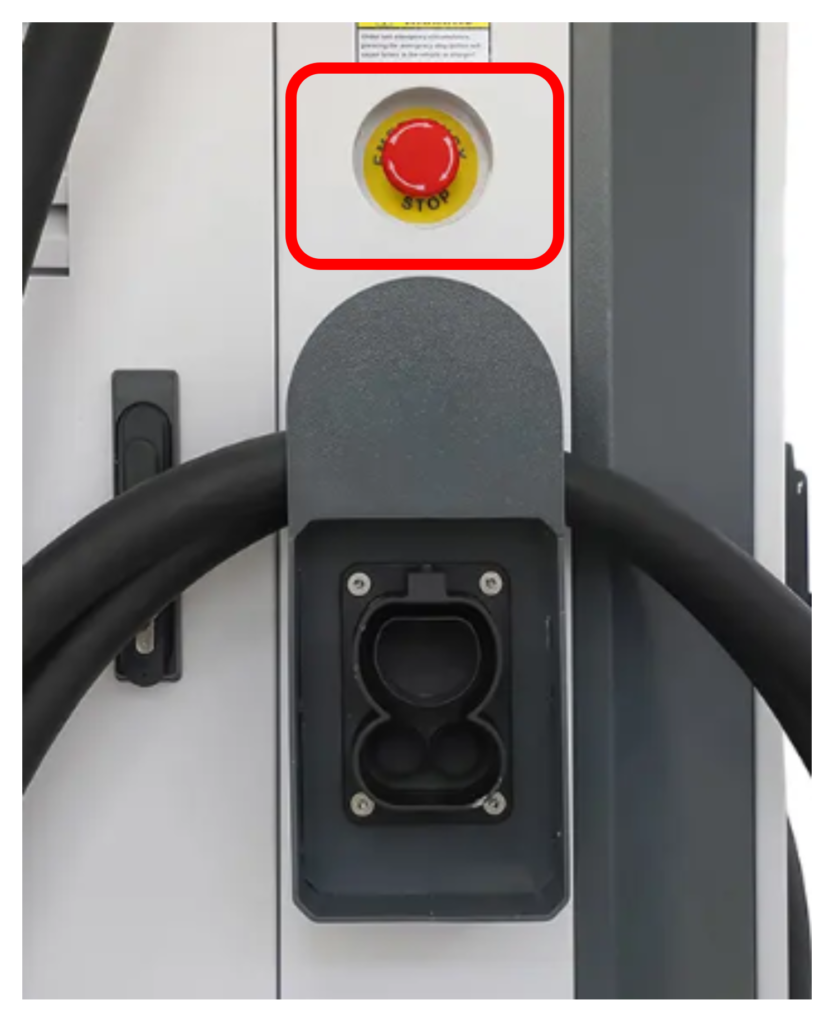User-Initiated Stop Conditions for EV Charging: A Comprehensive Guide
Electric Vehicles (EVs) offer multiple ways to stop an ongoing charging session, providing flexibility and safety. Whether using the vehicle’s interface, the charging gun, or even a mobile app, different methods cater to various needs and emergency situations. Here’s a detailed look at how users can stop charging their EVs.
1. Charging Stop Button on the Charging Inlet
EVs have a stop button on the charging inlet. Pressing this button signals the vehicle to stop charging after verifying user authentication. If authentication is successful, the charging process stops, and the cable unlocks, allowing the user to remove it safely.

2. Pressing the Release Button on the Charging Gun
Some charging connectors, such as Type 1 (SAE J1772), CCS1, and GBT, feature a release button on the gun itself. When pressed:
- The vehicle detects the signal.
- If the user is authenticated, charging stops.
- The cable unlocks for safe removal.

3. Stopping Charging from the Vehicle’s HMI
The Human-Machine Interface (HMI) inside the EV allows users to control various vehicle functions, including charging. The process typically involves:
- Navigating to the charging menu on the infotainment screen.
- Selecting the option to stop charging.
- The HMI communicates this command to the charging system, which terminates charging.
4. Using the Key Fob
Some EV manufacturers offer the convenience of stopping charging via the key fob. A predefined command, such as double-pressing a button, can instruct the vehicle to:
- Authenticate the user.
- Stop the charging process.
- Unlock the charging port.
This feature varies by model, so users should refer to their vehicle manual.
5. Emergency Release Wire
The release wire serves as a manual override in case of electrical failures preventing the locking motor from disengaging. When pulled:
- The charging system detects the locking motor’s status change from locked to unlocked.
- The charging session is terminated.
- The cable unlocks, allowing manual removal.
This safety feature ensures users can disconnect their EV even in case of system malfunctions.
6. Mobile App Control
Many EV manufacturers provide dedicated mobile applications that enable remote control of charging functions. To stop charging using an app:
- Open the EV manufacturer’s app.
- Navigate to the charging section.
- Tap the option to stop charging.
This method is particularly useful when managing charging sessions remotely, such as when parked in a public charging station.
7. Stopping Charging from the EVSE (Charging Station)
Electric Vehicle Supply Equipment (EVSE), or charging stations, allow users to stop charging directly from the unit. Methods include:
- Pressing a stop button on the charging station.
- Using a touchscreen interface to end the session.
- Swiping an RFID card or using a payment app to terminate charging.
This option depends on the charging station’s design and communication protocols.
Safety Considerations When Stopping Charging
- Avoid Unplugging Under Load: Always ensure charging is stopped before unplugging the cable to prevent electrical arcing, which can damage connectors and pose safety hazards.
- Emergency Stop Switch: Some public charging stations are equipped with an emergency stop (E-stop) button, allowing immediate power cut-off in case of emergency.

EV users have multiple ways to stop charging, offering convenience and safety in different situations. Whether using onboard vehicle controls, physical buttons, or mobile apps, these methods ensure secure disconnection of the charging cable. Understanding these options helps users manage their charging experience effectively, ensuring both vehicle and infrastructure safety.
EV Charging Explained – Everything you need to know about Electric Vehicle Charging